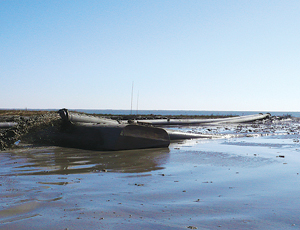As the U.S. marks the fourth anniversary of Hurricane Katrina, the White House Council on Environmental Quality has announced the formation of a new federal interagency task force to oversee the massive economic and environmental restoration work that still remains for the Gulf Coast.

The task force, announced on Aug. 26 by CEQ Chair Nancy Sutley in an interview with Bloomberg News, is something environmentalists and critics of the Army Corps of Engineers have been seeking since Katrina hit. CEQ so far hasn’t spelled out precisely what the new body will do, but observers hope it will integrate the federal response and accelerate the substantial construction work that lies ahead for the region.
“White House involvement in this issue is crucial,” says Scott Kirkpatrick, president and executive director of the Coast Builders Coalition, which includes construction and engineering firms. “The system implementation requires not only local, state and federal organization but coordination among various entities at each of those levels.”
Louisiana cannot wait long for restoration efforts to move forward. The state lost 340 square miles of land in the 2005 and 2008 hurricane seasons and continues to lose the equivalent of up to 32 football fields of coastal land each day, says Paul Kemp, vice president of the National Audubon Society’s Louisiana Coastal Initiative.
Kemp says the task force could set the stage for a better way of managing the Mississippi River than the “1930s view” that he says the Army Corps of Engineers still follows. That approach relies on channeling the river with flood-control levees, which prevents sediment-laden flow to replenish the delta.
“With this task force, hopefully we are on track for a more modern system,” says Kemp. Audubon and others propose river diversions to let sediment and fresh water rebuild marshes, critical in buffering storm surges. They also provide wildlife habitat, protect energy infrastructure and serve as nurseries for sea life.
Col. Alvin Lee, commander of the Corps’ New Orleans District, says the Corps will be able to apply many of the lessons learned from building the Greater New Orleans Hurricane and Storm Damage Risk Reduction System to coastal restoration. “We remain confident that we can add significant value to the process of restoring America’s gulf coast,” Lee says.

Post a comment to this article
Report Abusive Comment